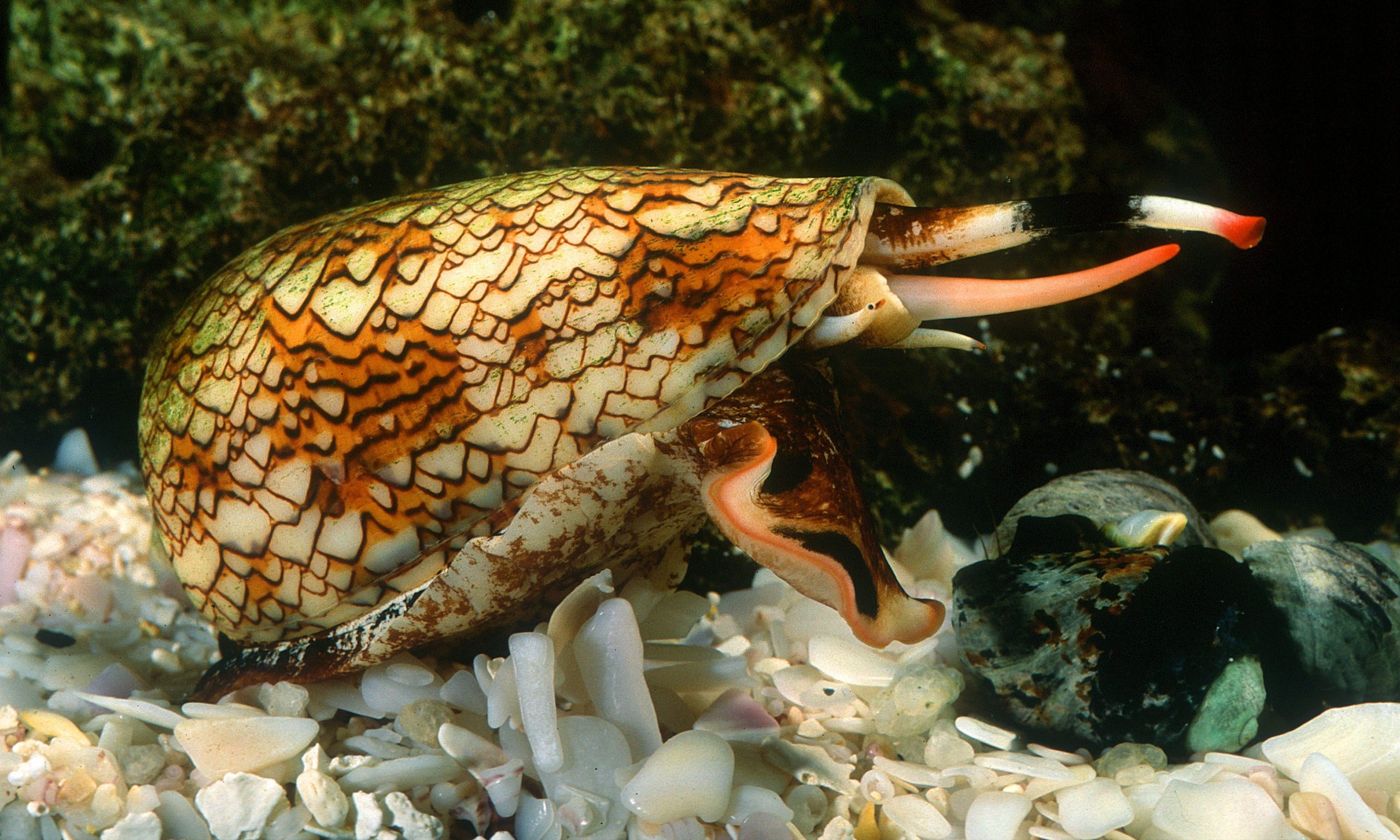
Cone Snails
Cone Snails
Cone snails (sometimes called cone “shells”) are widely distributed in all regions and usually found under rocks and coral or crawling along the sandy bottom. The snail’s shell is most often symmetrical in a spiral coil and colorfully patterned on its surface, with a distinct head, one to two pairs of tentacles, two eyes, and a large flattened foot on the body. A cone snail sting should be considered to be as potentially severe as a venomous snake bite. The cone snail has a highly developed venom apparatus: venom is contained in darts inside the proboscis, which extrudes from the narrow end but is able to reach most of the animal. Cone snail punctures are followed by a stinging or burning sensation at the site of the wound. Numbness and tingling begin at the site of the wound and may spread to the rest of the body; involvement of the mouth and lips is severe. Other symptoms may include muscular paralysis, difficulty with swallowing and speech, visual disturbances, and respiratory distress.
Prevention.
Avoid handling cone snails. Venom can be injected through clothing and gloves.
First Aid and Treatment.
- Lay the victim down.
- Apply direct pressure with a pressure bandage and immobilization in a position lower than the level of the heart using splints and elastic bandages.
- Incision and suction are not recommended.
- Transport the victim to a medical facility while ensuring that the victim is breathing adequately. Be prepared to administer mouth-to-mouth breathing if necessary.
- Cone snail venom results in paresis or paralysis of skeletal muscle, with or without myalgias. Symptoms develop within minutes of the sting and effects can last up to 24 hours.
- No antivenom is available.
- Respiratory distress may occur due to neuromuscular blockade. Victims should be admitted to medical facilities and monitored closely for respiratory or cardiovascular demise. Treat as symptoms develop.
- If pain is severe, a local anesthetic without epinephrine may be injected into the wound site or a nerve block may be performed. Analgesics that produce respiratory depression should be used with caution.
- Management of severe stings is supportive. Breathing may need to be supported with endotracheal intubation and mechanical ventilation.
- Administer tetanus prophylaxis as appropriate.
Source: US Navy Diving Manual
Image: https://i.pinimg.com/originals/24/33/21/243321bef106a1012aa1ecf812089fd8.jpg

